It’s falling out of the news but Comet PANSTARRS still lives! You can still see it in a clear sky near you with nothing more than a pair of binoculars. And thanks to guidance from the bright zigzag of Cassiopeia, it’s easier than ever to find. Would that we had had this star group to point up comet-ward in March when PANSTARRS was brightest!
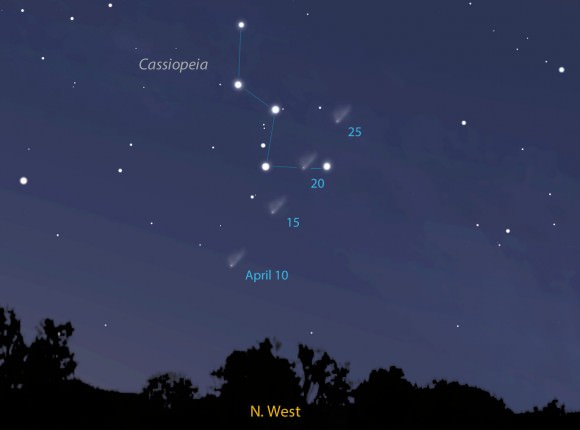
Start looking about 75-90 minutes after sunset or the same amount of time before sunrise. Yes, the comet is visible now at both dusk and dawn. Currently it shines at about 4.5-5 magnitude and might still be faintly visible with the naked from a very dark sky location. In 35-50mm binoculars it will look like a faint, fuzzy streak of light with a brighter head. Telescopes still give a wonderful view of the bright nucleus and shapely tail.
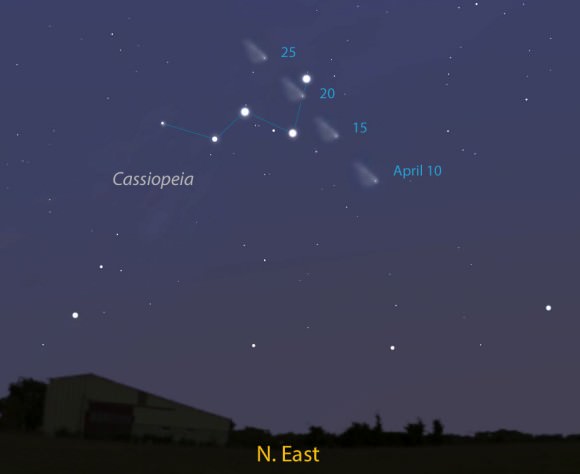
The other night a student who helps run our local planetarium described it as looking like a “real comet” through the telescope, the way textbook and online photos had led him to anticipate. Binoculars or telescope will show a misty, plume-like tail, but wide-field, time-exposure photography reveals the comet’s unbelievably broad fan of dust.
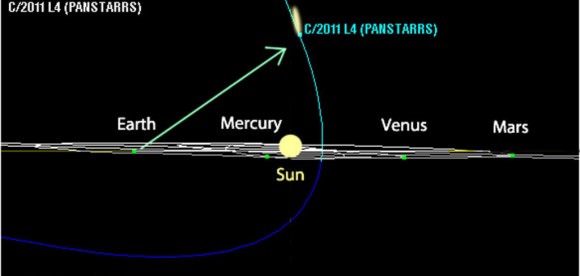
The reason for this unusual appearance has much to do with perspective. PANSTARRS is sailing back into deep space directly above the plane of the planets. With the tail blown back by the pressure of sunlight, we look up and across a distance of more than 125 million miles (201 million km) to see it spread like a deck of cards across the constellation Cassiopeia.
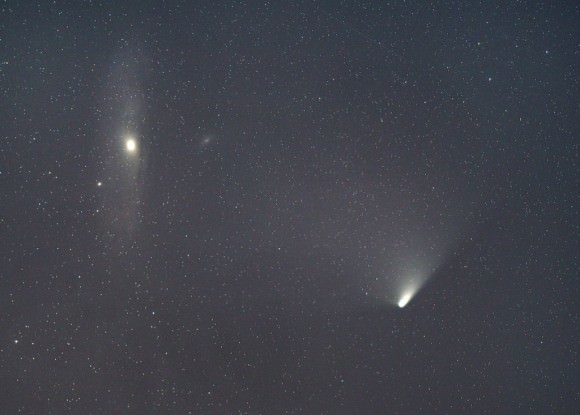
In the northern U.S., Cassiopeia is higher up in both morning and evening skies and easy to spot. Once you’ve found its familiar shape, focus your binoculars on the brightest star nearest the comet, and slowly work your way in its direction. Skywatchers in the northern U.S., Canada and Europe are favored because Cassiopeia is a northern constellation and higher up in the sky at both dusk and dawn. Observers in the southern U.S. will get their best views around the start of dawn.

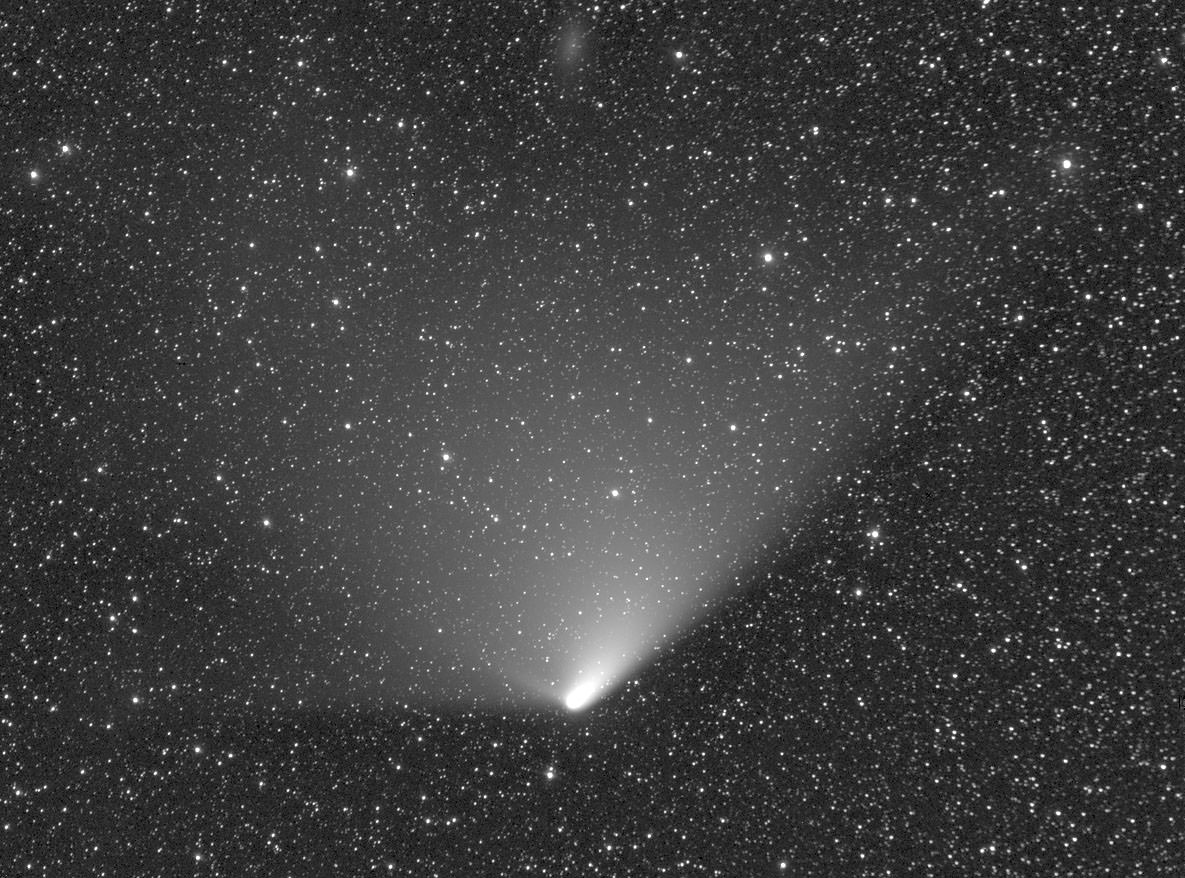
son muy estupendas ,estas fotosfantasticas
An excellent feature gives us a chance to tell others where to look rather that giving them a set of RA’s and Dec’s to sort out.